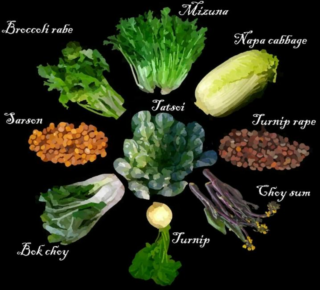
Brassica: Domestication, Weeds, and Evolution
Alex McAlvay and collaborators
Just as human selection has transformed wolves into a wide array of dog breeds, humans have shaped wild Brassica plants into diverse crops such as kale, cauliflower, and kohlrabi from Brassica oleracea as well as bok choy, turnips, and napa cabbage from Brassica rapa. Despite these crops’ worldwide economic importance and potential as a model for understanding the domestication process, insights into their evolutionary history have been limited due to a lack of clarity about their wild relatives. We are working to clarify the domestication history and nature of wild crop genetic resources for B. rapa and other Brassica crops in order to better understand the process of domestication and escape from domestication (feralization) as well as novel sources of diversity to protect our crops from climate change.
A new grant from the USDA will allow our team to look further into the feral forms of Brassica and investigate the potential of bringing resilience from weeds into crops to help confront climate change.
Press about this work:
National Geographic: Answers to These Botanical Mysteries Could Help a Climate-Stressed World
Atlas Obscura: The Deep Roots of the Vegetable That ‘Took Over the World’

Crops that humans have bred from a single wild species: Brassica rapa